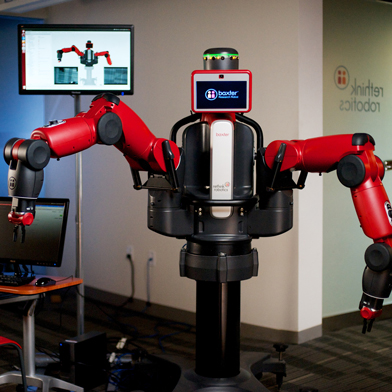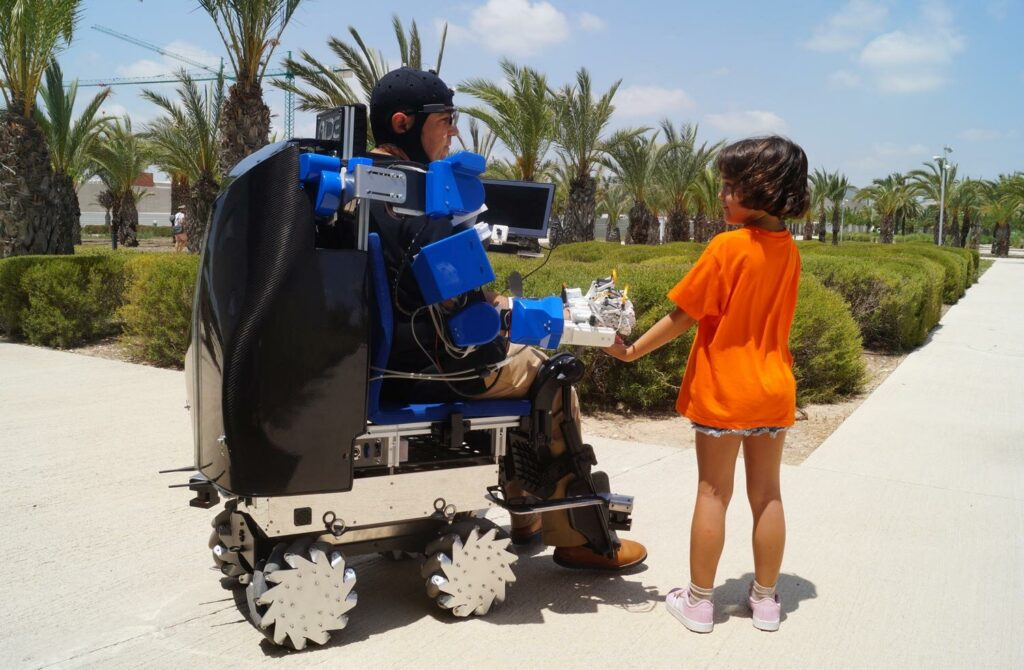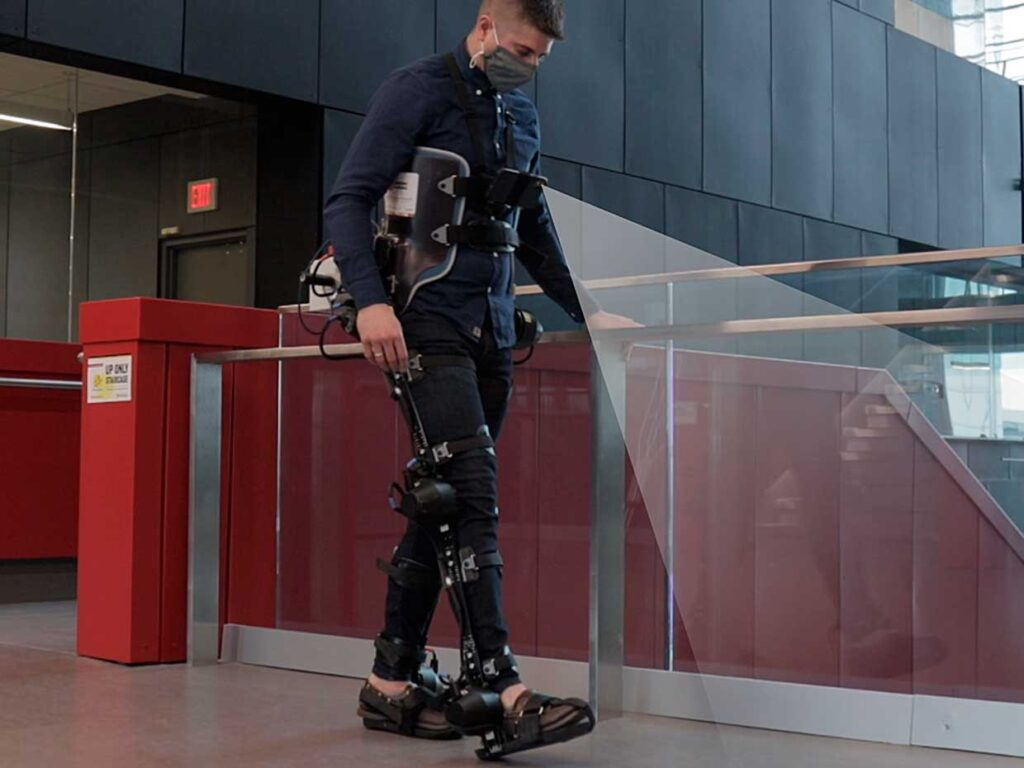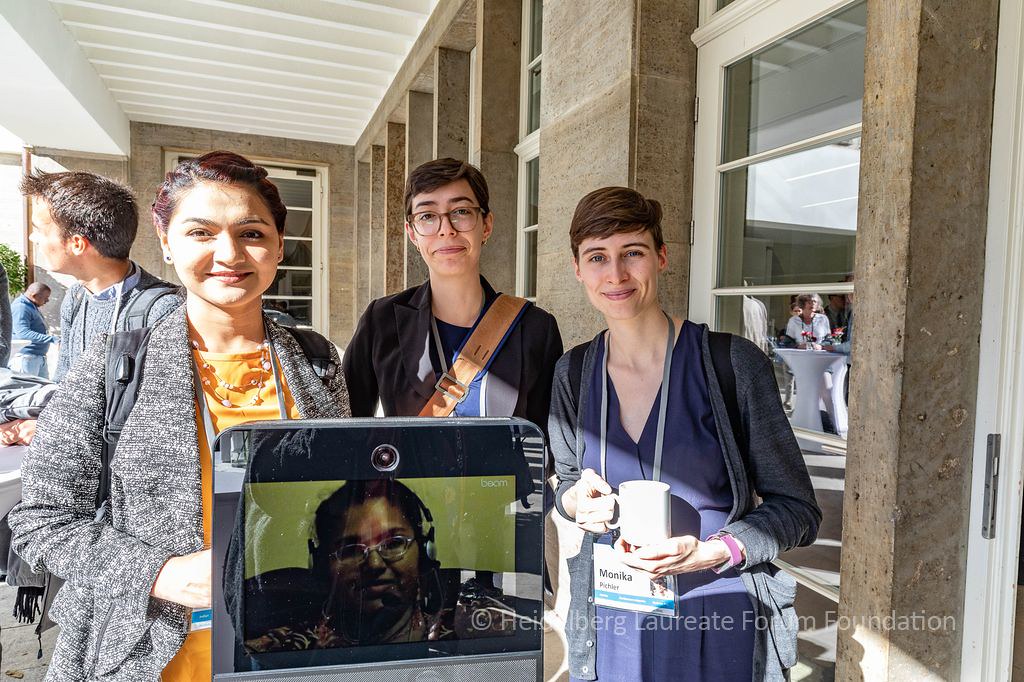How robotic aids are making life better for the physically impaired
BLOG: Heidelberg Laureate Forum

Over the past few decades, technology has changed and improved our lives in more ways than we probably realize. But technology is a tool — it doesn’t automatically make things better. In fact, in many ways, technology accentuates the divide between the well-off and the not-as-fortunate. The “digital divide” was also brought up several times at the HLF by internet pioneer Vint Cerf.
Cerf rightfully fears that technology can actually make things worse for the impaired. Modern technology, like any tool, can be used for bad or for good, just like the famous dynamite example: it can be used to dig tunnels or to wage war. It’s up to people to use it for the right purposes.
Similarly, like technology can leave people behind, it can also foster a more inclusive and accessible environment. A good example is robots, some of which have recently emerged as helpers for the impaired. Here are just some examples of how robots can make life a little better for those struggling with impairment.
Robots for the visually impaired

According to the World Health Organization, 285 million people are estimated to be visually impaired worldwide. Some have mild impairments, while others have little to no functional sight. Many have never even considered interacting with a robot, let alone receiving help from one. But that may soon change.
“Part of our job is to invent the future,” says M. Bernardine Dias, a professor at the Carnegie Mellon University Robotics Institute. “We envision robots being part of society in smart cities and want to make sure that people with visual impairment and other disabilities aren’t left out of that future.”
For someone who’s visually impaired, a trained dog can be a lifesaver — more than just a companion, dogs can help people get around and safely navigate the environment. But even the smartest dogs can’t really tell you which bill to use or what the bus station screen is saying. That’s where robots come into play.
The Baxter Robot developed by Dias and colleagues can serve as an assistive robot at an information desk in a busy transit center, helping with both visual and physical tasks (like offering information about bills and which travel card to use). Remarkably, the researchers found that blind people are extremely receptive to this type of technology and, unlike sighted people, show no apprehension towards working with a robot. They also developed an app called NavPal, which offers navigational assistance to blind adults as they move around unfamiliar environments. The app allows the user to store routes to desired destinations as phone contacts and offers indications on how to get to them.
Several other devices have been designed and built, with various degrees of success — a 2021 systematic review analyzed them in detail.
Robot wheelchairs
Of course, mobility is one of the main areas in which robots can help. Wheelchairs have been around for a long time, but with recent advancements, electric wheelchairs are becoming partly or even fully robotized.

Just a few weeks ago, researchers at University of Trento and University of Padua presented a semi-autonomous wheelchair that moves according to users’ eye-movements. This would allow people with severe motor disabilities who can’t move their limbs still navigate the environment, especially their homes. The navigation system can be used on wheelchairs of various shapes and sizes.
Another robotized system involves robotized arms that can help the user with a number of tasks such as eating, drinking, and washing up. The robotized wheelchair, developed as part of an EU project, also uses artificial intelligence to extract information about the user’s behavior and intentions.
“We can train artificially intelligent algorithms to predict what the user wants to do,” said Prof. García-Aracil, one of the researchers behind the project. “Maybe the user is in the kitchen and wants a drink. The system provides their options (on a monitor) so they can control the exoskeleton to raise the glass and drink.”
Other robotized wheelchairs transform to enable the user to go up and down stairs or navigate unfriendly terrain, and there’s still plenty of room for improvements and new features.
Exoskeletons and adjuvants

Prosthetics have also developed tremendously in recent years, and increasingly, researchers are developing robotized exoskeletons to help users manage day to day life.
Exoskeletons are placed on the user’s body to provide or enhance movement. Lower body exoskeletons, in particular, have received a lot of attention. While they are not always suitable, they can be a preferable solution to wheelchairs. Exoskeletons nowadays can provide much more than just muscle support: they are starting to make decisions about where and how a foot should fall or how an object should be gripped.
A recent study suggests that exoskeletons could use wearable cameras and deep learning to figure out the task the user wants to carry out and help with the task, somewhat like the cruise control setting in some vehicles. With a wrist-mounted wireless controller, the robotized prosthetics can lower the body onto a chair or go up and down stairs. In recent research, a team from North Carolina mounted cameras on exoskeletons to monitor what kind of activity these systems are used for and help automate motion.
It’s not perfect, and most systems are still expensive, but they can offer people much-needed independence — and according to some estimates, even save money in the long run.
Exoskeletons can also help with grip. The US FDA has recently approved a hand exoskeleton for stroke survivors, to help with their gripping of objects — devices like this one could help thousands of survivors through rehabilitation.

Different robots can also help participants attend events in which they are unable to participate physically. In 2018, Kavita Krishnaswamy attended the 6th HLF as a young researcher with such an aid. A perspective camera allowed her to navigate the environment, and thanks to a webcam, she was able to talk and interact with the other participants.
The need to include disabled academics in conferences which they may find inaccessible has been highlighted before — and systems such as the one used in Heidelberg could be a solution.
Autonomous robots

“True” robots can also help people with motor impairments perform day to day tasks, partially fulfilling the role of a carer.
A paper published in PLOS suggests that robot “surrogates” can manipulate various household objects (things such as water bottles, clothes, hairbrushes, even shavers). In the study, 15 people were offered the robot for a test, and after only a few days, all of them reaped important benefits. The robots are easy to control with an intuitive graphical interface, and the robot is equipped with a point-of-view camera.
Robots of various shapes and sizes are offering some much-needed independence to the physically impaired. There’s still much more that can be done and in a sense, we’re only scratching the surface of this field. Technology can indeed be a tool for good, and it’s always great when it’s used this way.


Robots and intelligent helpers create a win-win situation: they improve the lives of people who need it and they help advance robotics. A robot or other aid that can replace a guide dog, for example, is certainly very useful, and not only for blind people, but also for robotics as a discipline – because robots are to be used in the future not only in industry but also in everyday life.
The potential of such helpers is huge. One can even imagine elderly, frail people being able to avoid hospitalisation and nursing homes. Yes, technology can improve lives and will improve lives if we want it to.
Absolutely! I think we’re just starting to scratch the surface of what robotic aids and “proper robots” can do in this field.
Although as a minor note, I still think that while functionally robots may be more efficient than companion dogs in the not-too-distant future, the companionship that a dog provides is not something that’s fully replaceable.